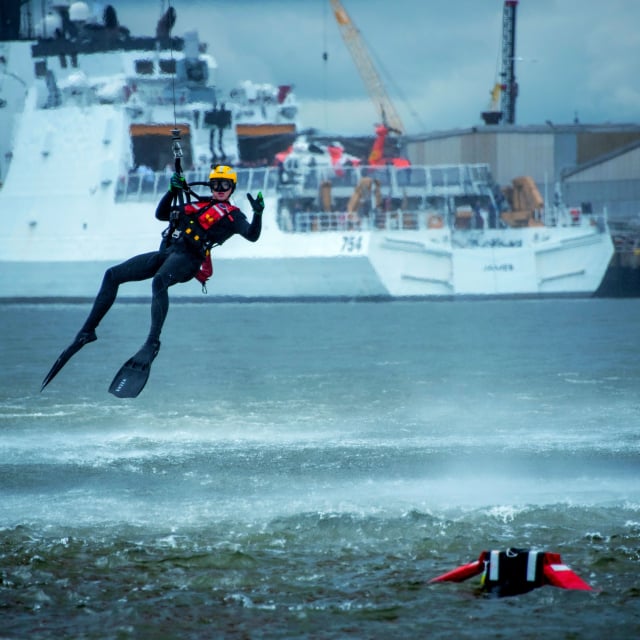Maritime rescue services are essential to ensure safety at sea, offering assistance in emergency situations and protecting lives and property. Below is a comprehensive guide to these services, their types, the technology used, the organizations involved, and some notable examples of rescue operations.
1. What are Maritime Rescue Services?
Maritime rescue services are operations intended to help people, vessels and property in danger at sea. These services include search and rescue (SAR), medical evacuations, technical assistance, and vessel towing. Maritime rescue operations are carried out in all weather and geographic conditions, making them a critical component of global maritime security.
2. Types of maritime rescue services
- Search and rescue (SAR): This is the most common type of maritime rescue, which involves locating and assisting people in distress at sea. SAR operations may include searching for missing vessels, rescuing shipwrecked vessels, and assisting disabled vessels.
- Medical Evacuations: Provide emergency medical transportation from vessels to medical facilities. These operations are essential in cases of serious illnesses or injuries that require urgent medical attention.
- Technical assistance: Includes help in case of mechanical breakdowns or technical failures on boats. Salvage crews can provide temporary repairs or tow the vessel to port.
- Towing: It consists of towing damaged vessels to a safe port. This service is crucial to prevent disabled vessels from becoming navigational hazards.
3. Technology and equipment used
- Rescue boats: Equipped with advanced technology for search and rescue operations. These vessels are designed to operate in adverse conditions and may be equipped with lifesaving equipment, advanced navigation systems and satellite communications.
- Helicopters: Used for quick rescues and medical evacuations. Rescue helicopters are equipped with cranes to lift people from the water or boats and can transport the injured to medical facilities quickly.
- Communication systems: VHF radios, satellites and warning systems to coordinate rescue operations. Efficient communication is crucial for the coordination of rescue teams and rapid response to emergencies.
- Locating devices: Emergency beacons (EPIRB) and global positioning systems (GPS) to track vessels in distress. These devices allow rescue teams to quickly locate vessels in distress and provide assistance.
4. Maritime rescue organizations
- Coast Guard: Main agency responsible for maritime rescue operations in many countries. The national coast guards are responsible for maritime security, the protection of human life at sea and emergency response.
- Non-Governmental Organizations (NGOs): Such as the Maritime Rescue and Safety Society (SASEMAR) in Spain or the Royal National Lifeboat Institution (RNLI) in the United Kingdom. These organizations rely heavily on volunteers and donations to operate.
- Private Companies: They offer rescue and commercial towing services. Some specialized private companies provide rescue and salvage services to commercial and recreational vessels.
5. Procedures in case of emergency
- Activation of a Distress signal: Use an emergency beacon (EPIRB) or a radio distress call. EPIRB beacons emit a distress signal that is received by satellites and retransmitted to rescue authorities.
- Provide Detailed Information: Include the position, nature of the emergency, number of people on board and condition of the vessel. This information is crucial for rescue teams to assess the situation and plan their response.
- Stay calm: Follow the instructions of the rescue teams and maintain constant communication. Calm and cooperation are essential for successful rescue operations.
6. Importance of maritime rescue services
- Safety and protection: They save lives and prevent material damage at sea. Maritime rescue services are an integral part of global maritime security, protecting seafarers, fishermen and recreational boaters.
- Confidence for boaters: They provide peace of mind for boaters, knowing that help is available in the event of an emergency. The existence of effective rescue services promotes navigation and maritime trade.
- Fast and efficient responses: Minimize response time in emergency situations, increasing the chances of successful rescues. Rapid and well-coordinated responses are crucial to saving lives and minimizing damage.
7. Notable maritime rescue cases
- Rescue of the Costa Concordia: One of the most complex and well-known rescue operations, carried out after the shipwreck of the cruise ship in 2012.
- Rescue operations in the Mediterranean: Involving the rescue of migrants and refugees in danger at sea.
8. Tips for sailors
- Preparation and planning: Conduct regular inspections of the vessel and have an emergency plan.
- Safety training: Training in first aid and emergency procedures.
- Adequate equipment: Have safety equipment and tracking devices on board.
Maritime rescue services are vital for safety at sea, offering fast and efficient assistance in emergency situations. With the combination of advanced technology, trained personnel and the collaboration of various organizations, these services ensure that boaters can feel safe and secure at sea.


